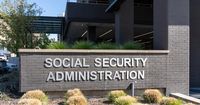The Social Security Administration (SSA) is facing a significant upheaval as it prepares for major policy changes and potential staffing cuts that could affect millions of Americans relying on essential services. Following announcements from SSA officials, the agency is poised to transition to stricter identity verification procedures starting March 31, 2025, amidst a backdrop of ongoing staffing shortages and plans to close local offices nationwide.
According to reports, these changes arise from concerns about fraud within the SSA, which services over 70 million beneficiaries and pays out billions in benefits each month. The SSA intends to enhance its identity verification process, requiring individuals who cannot verify their identity through the agency’s online platform, “my Social Security,” to visit local offices for in-person verification. This marks a notable departure from previous measures that allowed identity verification via telephone calls.
Acting Commissioner Lee Dudek stated, “Americans deserve to have their Social Security records protected with the utmost integrity and vigilance. For far too long, the agency has used antiquated methods for proving identity. Social Security can better protect Americans while expediting service.” Yet, this shift quickly drew criticism from various lawmakers and advocacy groups concerned about the implications for vulnerable populations.
Rich Couture, a union official at the SSA, pointed to the agency's current staffing challenges, which hit a 50-year low with approximately 57,000 workers tasked with assisting around 73 million Americans. “We currently have 57,000 workers serving about 73 million Americans, compared to fiscal year 2010, where we had 67,000 workers serving 60 million Americans,” he noted.
The SSA faces increasing demands, especially as about 10,000 Americans turn 65 every day and become eligible for Medicare. Coupled with the staffing shortages, the agency's ability to deliver timely services is already at risk, prompting concerns that changes to verification protocols will exacerbate existing problems.
With planned layoffs of at least 7,000 workers, Couture warned, “There’s significant risk of disruption that can be caused by the agency’s diminished ability to maintain its IT systems.” This could lead to longer wait times and processing delays for essential benefits, including disability claims, which are already under strain. Currently, individuals are waiting an average of eight months for an initial decision and seven months for an appeal.
Critics have raised alarms regarding the closure of local SSA offices, with 47 offices listed for shutdown, 26 of which are expected to close this year, including one in Melbourne, Florida, on May 16. Many advocates fear this could complicate access for those needing in-person assistance, particularly for seniors and individuals with disabilities. Nancy LeaMond from the AARP voiced her concerns, emphasizing that these changes would lead to greater challenges for the aging population, stating, “Requiring rural Americans to go into an office can mean having to take a day off of work and drive for hours merely to fill out paperwork.”
Furthermore, between January 2013 and May 2018, fraudsters redirected an estimated $33.5 million in benefits to unauthorized accounts, heightening the urgency for the SSA’s overhaul of identity verification. The agency characterized these shifts as necessary to combat fraud and ensure the integrity of benefit disbursal. However, many believe that requiring in-person visits will create additional barriers for the most vulnerable beneficiaries.
Social Security actuaries have predicted that if staffing levels stagnate, backlogs for initial benefits claims could swell from one million to two million. This could potentially disrupt the livelihoods of individuals who rely on these benefits for day-to-day expenses. Jack Smalligan, who previously worked for the Office of Management and Budget (OMB), elaborated: “People with an issue with their eligibility status will see delays that may disrupt their benefits.” He stated that the loss of jobs among SSA staff significantly complicates the resolution of even minor discrepancies in benefit eligibility.
The SSA, in its press statement, announced that this transition aims to “avoid the fraudulent redirection of benefit checks.” Beneficiaries seeking changes to direct deposit information will now encounter new verification hurdles, potentially complicating their access to essential benefits. Advocates continue to highlight that the requirement for in-person verification may particularly impact families with children relying on benefits, as children cannot verify accounts online through the “my Social Security” service.
As the changes approach, the threat of increasing fraud and longer wait times creates an atmosphere of uncertainty for recipients and their families. Those affected worry that these hurdles could add unnecessary stress and confusion to their already challenging circumstances. In an emotional response, 80-year-old recipient Sandi Bachom expressed her fears about the system's changes, articulating, “What would happen if I didn’t get that check? I don’t have any family. Everybody’s dead. There’s no one to take care of me.”
The agency’s dual focus on tightening security while limiting its workforce and office accessibility raises critical questions about its capabilities to support the growing population of beneficiaries. As reported, the SSA oversees the distribution of roughly $1.6 trillion in benefits annually, making it vital for lawmakers to re-evaluate the sweeping reforms being proposed.
With pushback coming from across the political spectrum, including a letter from 62 House Democrats urging the SSA to reconsider the new policy changes, the debate is shaping into one that contrasts the government's intentions of curbing fraud against the potential for widespread disenfranchisement of beneficiaries. The new policies and planned office closures serve as a stark reminder of the challenges ahead for both the SSA and those who depend on its support.
In the meantime, as April approaches, it remains crucial for beneficiaries to stay informed about how these procedural changes will affect them and to advocate for continued access to benefits that many Americans have earned through a lifetime of work.







